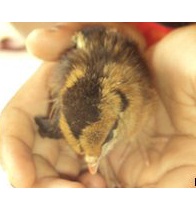I have been asked numerous times why there are no vets around who work on backyard chickens. It’s been suggested that I should specialize in backyard health and make my millions. There has been an article in the Wall Street Journal no less, decrying the lack of vets with chicken experience (http://online.wsj.com/article/SB10001424127887323527004579081812563033586.html?mod=WSJ_hp_EditorsPicks#articleTabs%3Darticle).
I will try to tell you why there is a lack of vet care available for your chickens. Like most real-life problems, it is complicated, involves money, attitudes, history and inertia. Some ways to approach providing backyarders access to vet care include a backyard poultry only practice, professional poultry vets branching out into backyard flocks, or small animal vets branching out into backyard flocks. All of these have challenges. I will give you my top 10 reasons why there is a lack of veterinary care for backyard flocks;
10) Money
I have worked exclusively with poultry for 15 years now. I’m happy with my income (unless you happen to be my boss, in which case, I’d like a raise), and I like working with the birds. I visit about 2 – 3 flocks per day, and I earn hundreds of dollars from each visit (sue me, but I’d like to earn more than a plumber….10 years of post-secondary education left me with a small mortgage, and it should be worth SOMETHING). Since the flocks I visit have thousands of birds, each visit costs pennies per hen. Many backyarders won’t be willing to pay $50+ per visit, which is about the minimum I’d need to keep my doors open.
9) Biosecurity
I know activists would have you believe that biosecurity is just an excuse to keep professional farms out of the public’s eye, but it is a crucial component of the health programs on all commercial sized farms. This year alone, I am aware of backyard flocks who have been diagnosed with Avian Influenza, Mycoplasma, Salmonella enteritidis, Infectious Laryingotracheitis, Fowl Cholera and Blackhead…..all of which would be devastating in a professional flock…..as in, people losing their livelihood and home, level of devastation. Believe it or not, the amount and variety of diseases in backyard flocks dwarf the infections on professional farms, and the risk of carrying diseases is very real.
8) Liability
I have been asked to do things like prescribe medications or sign export certificates on backyard flocks. The reality is that, as a professional, every time I sign my name to a certificate, it is on me to make SURE it is true. So, if you want to move a flock across state lines, and I sign a form saying your flock has shown no signs of disease X in the past 3 months, I need to be SURE that they haven’t. This means that I need to know you and your flock well, and have multiple visits (costing you $$ multiple times). If the hens are carrying the disease I stated they were free of, it is ME who is charged with negligence or malpractice. This is not as big an issue for small animal vets, because the impact of a missed case of kennel cough or FELV isn’t the same as moving the hens that are the start of an agricultural disease (the Avian Influenza outbreak in British Columbia cost an estimated $380 million, and almost definitely started in a backyard duck flock).
7) Different type of Medicine
For me, as a commercial vet, I concentrate on keeping flocks healthy. To do that I do what is called “population medicine”, and am more focussed on the health of the group as opposed to each individual hen. Sick hens will often be euthanized to be examined and samples taken so the rest of the flock can be appropriately treated. That model does not work for backyard flocks. Techniques like exploratory surgery, intravenous fluids, severe wound repair or life support therapy are necessary, even crucial when dealing with backyard hens, but I am not used to performing them, and it is an entirely different mindset.
6) Interest
Very few small animal vets have any experience or interest in chickens. They like dogs and cats, and think guinea pigs and hedgehogs are cute, but chickens are alien to almost all of them. Chickens are so different than the mammalian patients my classmates see that they are very uncomfortable in even attempting to deal with them. This is a wide generalization, but holds true in most cases. I know of an injured hen that was flatly refused at a vet clinic because the vet said she “wouldn’t even know where to start”.
5) Lack of tools
Chickens are no longer expected to be in small groups in North America. Vaccines come in bottles of 1000, 5000, 10,000 or 25,000 doses, and once opened, need to be used within 2 hours or they don’t work. (One of the vaccines I use can only be bought in a 25,000 dose bottle). Even though I want to recommend vaccination of backyard flocks, it is difficult to justify buying 5000 doses of Newcastle Disease vaccine for your 5 hens. Antibiotics are the same….most come in a pouch that treats 100 gallons of water….once opened, the antibiotic starts to lose efficacy, and should not be stored for later use.
4) Lack of Numbers
Even if there was a way to provide decent care in a metropolis like Toronto, or New York, that would still only help a very small percentage of the backyard hens…..what about the smaller cities, towns, and even rural flocks (cow and horse vets don’t really have any comfort with chickens either, as a rule). Unless there is a critical mass of hens, it is very difficult to provide care, regardless of the location.
3) Chickens are weird
Face it…chickens are weird. They have an odd social structure that can seriously impact their health, they have a wildly different biology that other pet animals (respiratory, digestive, reproductive, cardiovascular, immune, bone and skin systems are all vastly different than other pets). It means that a small animal vet cannot apply what he/she knows in other areas to the chicken. A chinchilla is not that different that a dog or cat, and you can logically adapt treatments if one is brought into your clinic, but a chicken does not fit the model. At all.
2) Chickens are food
Another aspect of treating chickens that makes small animal vets uncomfortable is that you don’t (usually) eat your pets. I am very aware of the human health implications of everything I do on a farm. I only use antibiotics that I am confident will not contaminate the eggs or meat, or else I know how long that contamination will persist for, and advise against eating the eggs for a period of time. Small animal vets don’t have this background, and are (rightly) worried about causing residues that make people sick.
1) Inertia
The number one reason that vet care isn’t more available for backyard chickens is inertia. “It just isn’t done”. Like giving women the vote, this is unheard of, and might be the end of civilization as we know it. Keep asking your vet (and other vets) to look after your hens. Be willing to pay a little, in order to make him/her think about making it a part of the clinic’s business model. Be patient if they are slow, or unsure. Keep trying to make it happen, and in the near future, someone will figure out that treating chickens is not scary or dangerous, and a model for this type of medicine will emerge and become commonplace.
Mike the Chicken Vet


















